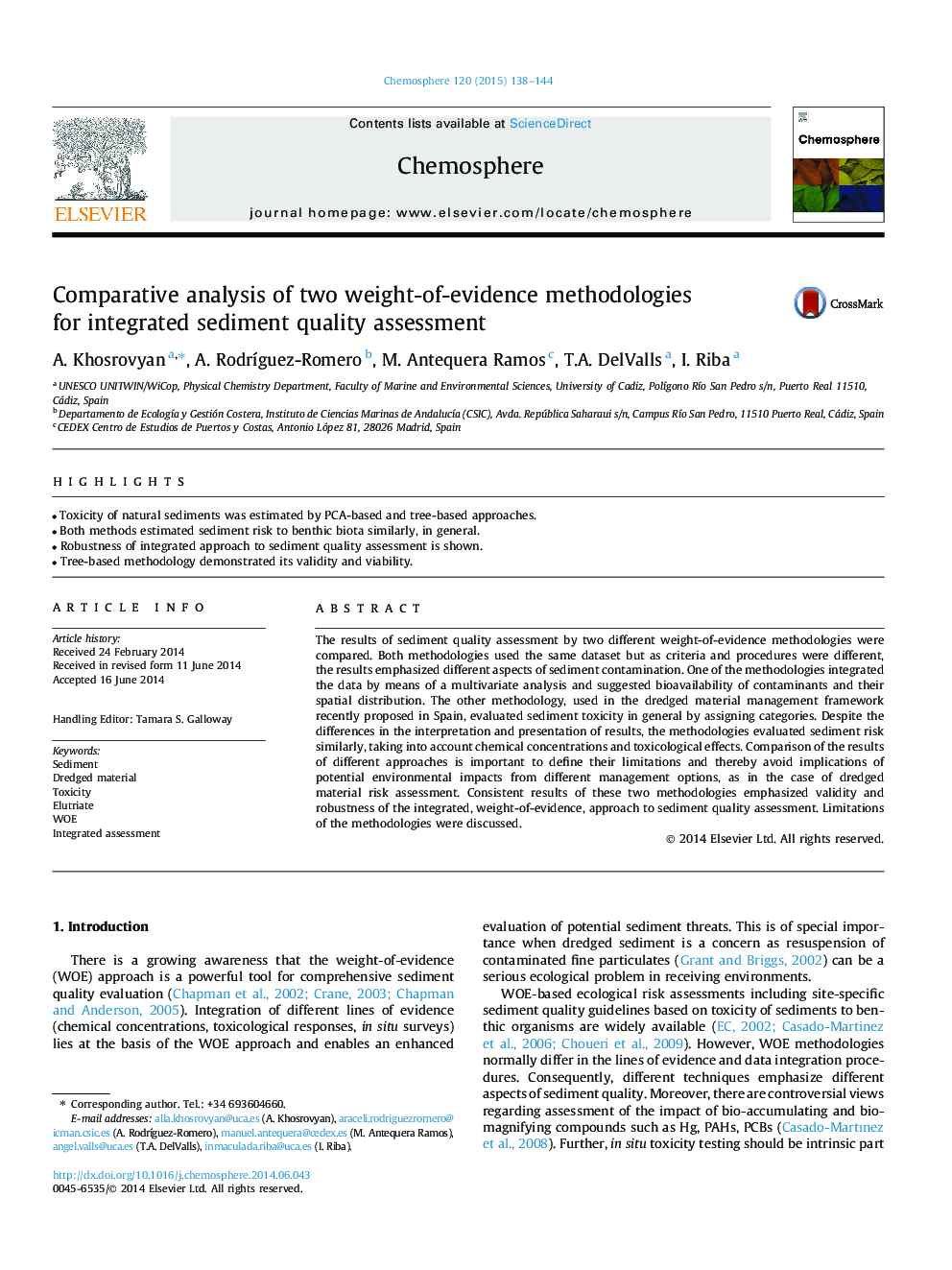| Article ID | Journal | Published Year | Pages | File Type |
|---|---|---|---|---|
| 6308141 | Chemosphere | 2015 | 7 Pages |
Abstract
The results of sediment quality assessment by two different weight-of-evidence methodologies were compared. Both methodologies used the same dataset but as criteria and procedures were different, the results emphasized different aspects of sediment contamination. One of the methodologies integrated the data by means of a multivariate analysis and suggested bioavailability of contaminants and their spatial distribution. The other methodology, used in the dredged material management framework recently proposed in Spain, evaluated sediment toxicity in general by assigning categories. Despite the differences in the interpretation and presentation of results, the methodologies evaluated sediment risk similarly, taking into account chemical concentrations and toxicological effects. Comparison of the results of different approaches is important to define their limitations and thereby avoid implications of potential environmental impacts from different management options, as in the case of dredged material risk assessment. Consistent results of these two methodologies emphasized validity and robustness of the integrated, weight-of-evidence, approach to sediment quality assessment. Limitations of the methodologies were discussed.
Related Topics
Life Sciences
Environmental Science
Environmental Chemistry
Authors
A. Khosrovyan, A. RodrÃguez-Romero, M. Antequera Ramos, T.A. DelValls, I. Riba,
